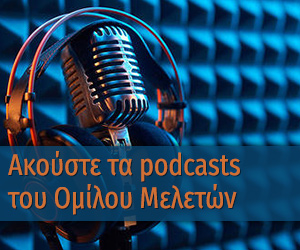Nikodemos
1. Ouspensky’s partial and unsatisfactory examination of the FCG (=4 Canonical Gospels) were followed by some other attempts at interpreting Christ’s teaching by some of O’s followers. The most notable one is M. Nicoll’s The New Man (1972 The Penguin Metaphysical Library but first published in 1950). MN was a student of Gurdjieff and then Ouspensky for several years and was given permission by O to set up his own groups and disseminate the “system”. MN died in 1953 leaving unfinished another book of gospel-interpretation The Mark.
MN’s investigation has both the merits of O’s “psychological” method (giving some fine indights of interpretation) and the vices of its practical application.
2. MN explains the commandment “Thou shalt not steal” and writes: “To steal, psychologically, means to think that you do everything from yourself, by your own powers, not realizing that you do not know who you are or how you think or feel, or how you even move. It is, as it were, taking everything for granted and ascribing everything to yourself” (p3). Yes, undoubtedly, there is in us a greater Power that vivifies and moves us but our ego usurps its force.
But then MN writes that “this meaning is veiled” because if it were expressed literally and analytically as he gives it, people would not believe it and think it nonsense.
This comment is strange because the formulation of the commandment “veils” nothing. It is simply a laconic statement, as was the mode of formulating such injunctions in ancient times. In the ancient Vedic tradition the formulation is even shorter: asteya “non-stealing”! Usually people steal gross objects like gold and clothes etc or subtle like poses, gestures and ideas and then from the higher Power. How the injunction is interpreted depends on the intelligence and understanding of the hearer/reader. If it was veiled, then the people for whom it is chiefly meant would not understand it at all.
3. MN stresses the “psychological” meaning and the “ancient language” of parables (7-9). He comments by way of example on Jesus’ words to Nicodemus “Except a man be born of water and the spirit he cannot enter into the kingdom of God” (John 3:5), saying that spirit perhaps means “will” or the inmost, real part of man (p8) and adding that it is nonsense to think a man must be born again of physical water (9). True! But, of course “water” here could be simply baptism by immersion or sprinkling which is the ancient rite symbolising the cleansing of heart and mind. After all, Jesus himself was baptised by John in the river.
He gives other examples of the language of parables but they too are more of the nature of simple metaphors than symbols. When Jesus tells the Samaritan woman that he will give her water that will remove her thirst for ever (John 4:13-14), he obviously refers metaphorically to his own instruction. But would the brief exchange they had there and then be really sufficient to ensure the permanent satisfaction of the woman? I doubt it. This is the aspect occultists should examine more thoroughly.
Another example MN gives is from Isaiah 41:17 – “The poor and needy seek water and there is none”. Yes, water may well stand for “truth” here but what of the subsequent verses (18-19) which say that God will open up rivers and plant cedars, myrtles, firs and pines in the wilderness. MN extracts no esoteric meaning from them!
This selectiveness vitiates the method entirely.
4. Other difficulties are seen when MN deals with the Sermon on the Mount (110ff). Here, again, he gives some fine psychological insights according to esoteric ideas but, again, disregards important aspects. First, the Sermon in Matthew (ch 5ff) is given atop a mountain to the disciples alone, whereas in Luke (ch 6) it is given to a multitude on a plain! He rightly translates ptochōs as “beggar(-ly)” in both but he is wrong in rendering the adverb nounechōs (Mk12:34) as “with his own mind”: the “own” is imported
MN also says that the Sermon “lies in between the teaching of John the Baptist and Christ’s teaching in parables”. This is rather disingenuous because it can apply only if we take the two Gospels of Luke and Mathew as one unitary whole; otherwise, in Luke the teaching of John Baptist appears in ch 3 together with Jesus’ baptism, then Jesus teaches in ch 5 and the Sermon is in ch 6: here the Sermon comes after the teaching. The same sequence is followed in Matthew (chs 3,4,5).
I shall continue in the next paper.


